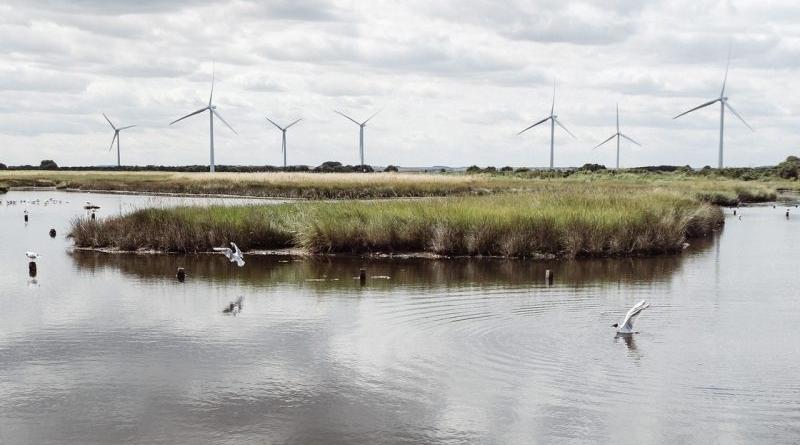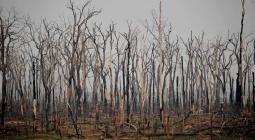Europe needs both nature restoration and renewables deployment

Can we achieve the Green Deal without protecting nature? Simply put, no – it is as central to the energy strategy as it is to meeting environmental goals, write Noor Yafai and Kristian Ruby.
Noor Yafai is the Europe Director for Global Policy and Institutional Partnerships at The Nature Conservancy and a member of the EU Biodiversity Platform. Kristian Ruby is the Secretary General at Eurelectric.
EU policymakers do not have time to delay action. The European Commission has proposed nature restoration measures to support at least 20% of the EU’s land and seas by 2030. And this central measure of the proposed Nature Restoration Law couldn’t come a moment too soon. Over 80% of habitats in the European Union are already in poor condition due to intensive farming, urban sprawl, or pollution. Last year’s droughts were the worst in 500 years.
Nature is essential to achieve climate neutrality and ensure food security. Natural carbon sinks like forests and soils depend on biodiversity for their resilience. Climate change will only add fuel to the fire. Set to become the leading driver of biodiversity loss by 2050, it will wipe out even more of the natural world.
The good news is that decarbonising the electricity system and restoring nature can be done in an integrated manner. Set against the backdrop of the war In Ukraine and related energy concerns, the EU launched Its REPowerEU package to accelerate the development of renewable energy and related Infrastructure. The EU and Its member states now have a crucial window of opportunity to get Europe’s clean energy transition right.
Renewables Acceleration Areas to fast-track planning
In March, the EU agreed on the reviewed Renewable Energy Directive, increasing the targeted share of renewables in the EU to 42.5% by 2030 – with ambitions to top 45%. To deliver on this promise, a commitment has been made to develop a new framework for planning permits – reforming one of the biggest barriers to the renewable rollout.
Of utmost importance is the fact that the new framework gives member states the mandate to carry out sound spatial planning; that means combining nature, energy and grid planning and involving all the relevant stakeholders. Maintaining the current positive momentum on renewables permitting in Europe will depend to a great extent on member states’ planning.
The Directive gives states just 27 months from the law being passed to set up new ‘Renewables Acceleration Areas’ – zones that should be particularly suitable to develop renewable energy projects and where deployment is not expected to have a significant environmental impact. In these areas, permit delivery is expected to be cut down to one year.
But beyond that, there is a lot that will still be defined by Member States: where these areas will be, how large, how many, which technologies, protected areas to be avoided. For many member states this will be the first time they will carry out this mapping and strategic area environmental impact assessment. This is a huge task.
Where to from here?
We’re asking for the European Commission to develop further guidance for EU member states to identify low-biodiversity conflict areas for accelerated renewable deployment and best practice principles for implementation.
Assistance to support consistent, clear and credible mapping would accelerate the designation of Renewable Acceleration Areas in ways that build confidence for local communities and business operators alike, thus minimising the risk of lengthy court challenges and delays in project development.
This would give clearer signals to industry – preventing investors from having to navigate multiple different approaches – and could stimulate an EU-wide approach to renewables siting and integrated renewables projects best practice, while respecting local specificities.
There are already plenty of examples across Europe where an integrated approach to siting and design is enabling countries to meet energy, climate, and biodiversity goals.
In Croatia, an Initial study In Zadar identified enough low-conflict land to deliver 50% of their national renewables target from just one county. In a wide-ranging study called PowerPlant, Eurelectric has identified a wealth of best practice case studies for how renewables sites can restore nature, address biodiversity loss, and benefit local communities.
The challenge now is how the EU can best enable these types of approaches to take hold across member states.
Showing leadership
Making a success of both the EU Nature Restoration Law and the Renewable Energy Directive would secure the EU’s global leadership on climate change and biodiversity. It would show the world that we are taking land-use conflicts seriously, proactively addressing concerns that have too long overshadowed the bright future that renewables make possible for our world.
Policy experts currently expect the Directive to be formally endorsed and enter into force towards the end of Summer 2023. After that, EU member states will have just 18 months to map the deployment of renewable energy in their territories and 27 months to designate their Renewables Acceleration Areas.
Action must therefore be taken by the European Commission now to provide leadership on permit frameworks. Consistent frameworks will be easier for stakeholders to use, easier for communities to understand and more reliable in driving nature restoration and other environmental goals even as they unlock additional renewable energy capacity.
cover photo:Decarbonising the electricity system and restoring nature can be done in an integrated manner, argue Noor Yafai and Kristian Ruby. [Michael Dales / Flickr]





